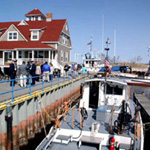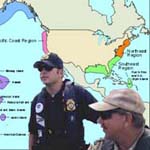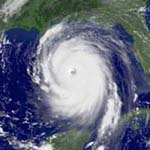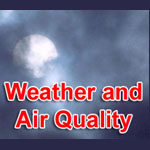| |
This site will no longer be updated, but will remain archived. The last issue of NOAA Magazine was posted on August 2007.
 |
 UP
CLOSE: NOAA’S GREEN SHIP INITIATIVE LED BY DENNIS DONAHUE AND
GLERL’S SHIP OPERATIONS GROUP
UP
CLOSE: NOAA’S GREEN SHIP INITIATIVE LED BY DENNIS DONAHUE AND
GLERL’S SHIP OPERATIONS GROUP
Thanks to the innovations put in place by NOAA marine superintendent,
Dennis Donahue, and the “Green Ships Initiative,” all
three of NOAA’s Great Lakes Environmental Research Laboratory
large diesel research vessels operate fully on bio-based, vegetable
products. The R/V Huron Explorer, R/V Shenehon and R/V
Laurentian, all use 100 percent soy biodiesel for engine fuel,
canola-based motor oil and vegetable-based hydraulic oil for its deck
crane, winches, transmission, and steering gear. Not only is this
a cost effective way to help reduce environmental emissions, but it
also has improved both ship performance and crew health and safety.
The ships are the first in the U.S. fleet to operate on 100 percent
bio-based products and GLERL has already received two national level
awards for this environmental effort.
Full Story Inside |
 NOAA’S
SPECIAL AGENTS AND ENFORCEMENT OFFICERS UNDAUNTED BY MISSION
NOAA’S
SPECIAL AGENTS AND ENFORCEMENT OFFICERS UNDAUNTED BY MISSION
Considering the 3.44 million square miles that comprise federal waters,
is twice the size of the entire land mass of the United States, protecting
resources withing this marine zone could be seen as a daunting task.
However, for the 220 NOAA employees within NOAA Fisheries Service’s
Office of Law Enforcement, this is just everyday business. Enforcing
more than 39 federal statues and numerous international treaties,
these special agents, enforcement officers and support personnel rely
on partnerships. They use help from other federal and state agencies
and work with local communities, technology and traditional police
skills to protect and conserve the nation’s marine resources.
"Protection of these resources range from stopping salmon poachers
on the Columbia River in the Northwest to protecting endangered sea
turtles resting on a Hawaiian beach," said OLE Director, Dale
Jones." Each year the OLE investigates thosands of violations
of federal regulations and statutes."
Full Story Inside |
 BEHIND THE SCENES: NOAA'S
NORTH ATLANTIC HURRICANE SEASONAL OUTLOOK
BEHIND THE SCENES: NOAA'S
NORTH ATLANTIC HURRICANE SEASONAL OUTLOOK
From emergency
managers and planners at all levels of government, to businesses
and the financial markets to the general public, nearly everyone
uses the NOAA Atlantic Hurricane Seasonal Outlook. The outlook is
meant to give the public ample warning of what to expect for the
upcoming season, in order to mitigate the potential loss of life
and property. The outlook also serves as a reminder for annual hurricane
preparedness efforts to begin in earnest. Time and time again, emergency
aid workers find that by far, those individuals and communities
that are prepared for the hurricane season fare much better during
an actual event than those who are not. While meteorologists at
the NOAA National Hurricane Center predict the track and strength
of individual storms, the annual Hurricane Seasonal Outlook is an
official forecast product of NOAA’s Climate Prediction Center.
It’s the job of NOAA’s seasonal hurricane forecasters
to predict tropical storm and hurricane activity over the entire
six-month season.
Full Story Inside
|
 SUMMER
WEATHER CAN PROMOTE POOR AIR QUALITY – NOAA’S AIR QUALITY
FORECAST GUIDANCE HELPS PREDICT IT
SUMMER
WEATHER CAN PROMOTE POOR AIR QUALITY – NOAA’S AIR QUALITY
FORECAST GUIDANCE HELPS PREDICT IT
In
many parts of the country, the arrival of summer signals the start
of air pollution season. Fortunately, the NOAA National Weather Service’s
air quality forecast guidance, produced in partnership with the U.S.
Environmental Protection Agency, helps provide air quality forecasters
and the public with information on predicted air quality conditions
they need as they plan their daily activities. NOAA’s involvement
in air quality forecasting stems from the fact that air quality and
weather go hand in hand. Weather can promote both the formation or
degradation of various airborne pollutants and can disperse/transport
them from one part of the country to another, thus making air quality
a national issue. “You can not accurately predict air quality
without taking into account weather — and that is exactly what
NOAA’s air quality forecast guidance does,” said Paula
Davidson, manager for the NOAA National Weather Service’s Air
Quality Forecasting program in Silver Spring, Md. “Measuring
air pollution alone does not tell you very much about how it will
change over the next few days, but by taking into account meteorological
conditions such as wind, temperature, humidity, precipitation and
cloud cover you gain a much better understanding of how and why air
quality varies day to day.”
Full Story Inside |
 |
|
|
|

